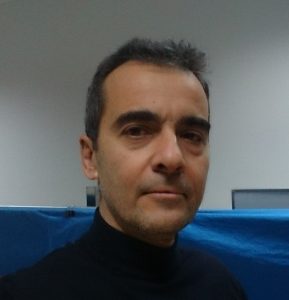
Associate Professor Marios Valavanides from the department of Civil Engineering, University of West Attica, Greece, will visit PoreLab Trondheim next week. He will stay 3 days from January the 28th until the 30th. Marios will give a seminar talk about “Recent advances in the DeProF theoretical framework for two-phase flows in porous media – where we stand and where we could go” on January the 28th in our common area at PoreLab (PTS2, 2nd floor).
The abstract is as follow:
Recent advances in the DeProF theoretical framework for two-phase flows in porous media –
Where we stand and where we could go.
Marios S. Valavanides
University of West Attica, Greece
marval@uniwa.gr , http://users.uniwa.gr/marval/index_en.html
The DeProF tentative theory for two-phase flow in porous media is built around a hybrid mechanistic/stochastic model [1] that is based on the concept of decomposition in prototype constituent flows, namely, connected pathways, ganglion dynamics and emulsion-type /drop traffic flows, each showing different levels of disconnectedness of the non-wetting phase. The model accounts all essential pore-scale phenomena on a mechanistic basis and up-scales these into corresponding network-wide cooperative effects using a stochastic approach. The momentum balance in the entire flow is regulated by the relative intensities of the NWP and WP flows (inducing viscous flow resistances within the bulk of the NWP and WP) and the degree of disconnection of the NWP (inducing capillary resistance across the N/W interfaces). Steady-state flow conditions settle-in when each dissipative term is counterbalanced against the other two. The balance point is regulated by the flow conditions. This is so because viscous and capillary resistances do not depend on the flow conditions in the same way. The DeProF model takes into account the contribution of all system properties correctly in appropriate reduced numbers; in particular, viscosity disparity vis-à-vis capillarity, wettability and pore network structure, leading to the derivation of an improved, system-reduced, capillary number. In that context, modeling redundancies associated to the system properties are reduced to a minimum. Being very efficient in correctly and consistently predicting, not only the relative permeabilities on the Darcy scale, but also, the interstitial structure of the flow, the DeProF model evolved in a research tool. With extensive simulations across orders of magnitudes in terms of flow conditions and over different fluid systems it was possible to reveal the underlying, inherent systematic structure of biphasic flows in porous media across different flow regimes [2]. Just recently, it was possible to derive universal scaling functions for flow-dependent relative permeabilities [3]; the corresponding closed form expressions can now be easily integrated into true-to-mechanism, FEM solvers showing improved performance in terms of specificity.
In parallel, energy efficiency analysis of the sought process revealed a universal flow characteristic, the existence of a unique locus of critical flow conditions whereby the energy efficiency of the process (NWP flow rate per kW spent) attains locally -in terms of flow conditions- maximum values. This characteristic property was remaining in latency until revealed in an extensive retrospective examination of relative permeability diagrams [4]. The existence of a unique locus of critical flow conditions per N/W/PM system has opened new perspectives: (a) in describing the process in terms of the actual independent variables (the two flow rate intensities); (b) in deriving universal energy efficiency and relative permeability maps; (c) in developing methodologies for the normative characterization of biphasic flows as to the predominance of capillary or viscosity effects, the taxonomic classification of relative permeability diagrams and the effective characterization of pore network structures, using just a few, carefully selected, characteristic numbers [5]; and (d), in terms of practical applications, by providing a powerful tool in designing more energy efficient interventions in process design (e.g. in EOR displacements or filter applications). To provide a concrete theoretical justification of the existence of critical flow conditions, the DeProF framework implements the maximum entropy production principle and accounts the total entropy as the sum of two terms: the thermal entropy production at the molecular level scale and the configurational entropy production at the scale of the ensemble of physically admissible interstitial flows. The former is estimated directly by viscous and capillary hysteresis dissipation; the latter has been estimated by deriving an appropriate Boltzmann-Gibbs type expression accounting the process microstates [6]. The presentation will conclude with a list of open problems and research directions to explore.
References
1. Valavanides, M.S., Payatakes, A.C. True-to-mechanism model of steady-state two-phase flow in porous media, using decomposition into prototype flows. Adv. Water Resour. 24(3–4), 385–407 (2001)
2. Valavanides, M.S. Flow structure maps for two-phase flowinmodel pore networks. Predictions based on extensive, DeProF model simulations. Oil Gas Sci. Technol. Rev. IFP Energies nouvelles 73 (6), 1-36 (2018), https://doi.org/10.2516/ogst/2017033 (2017)
3. Valavanides, M.S. Universal, true to mechanism, flow dependent relative permeability scaling functional form for steady-state 2-phase flows in p.m.”, Intern. Symposium of the Society of Core Analysts, Trondheim, Norway, 27-30/8/2018, http://users.uniwa.gr/marval/publ/Valavanides_SCA2018_066.pdf
4. Valavanides, M.S., Totaj, E., Tsokopoulos, M. Energy efficiency characteristics in steady-state relative permeability diagrams of two-phase flow in porous media. J. Petrol. Sci. Eng. 147, 181–201 (2016). https://doi.org/10.1016/j.petrol.2016.04.039
5. Valavanides, M.S. Review of steady-state two-phase flow in porous media: independent variables, universal energy efficiency map, critical flow conditions, effective characterization of flow and pore network. Transp. in Porous Media 123 (1), 42-99 (2018), https://doi.org/10.1007/S11242-018-1026-1
6. Valavanides, M.S., Daras, T. Definition and counting of configurational microstates in steady-state two-phase flows in pore networks. Entropy 18 (054), 1–28 (2016). https://doi.org/10.3390/e18020054
